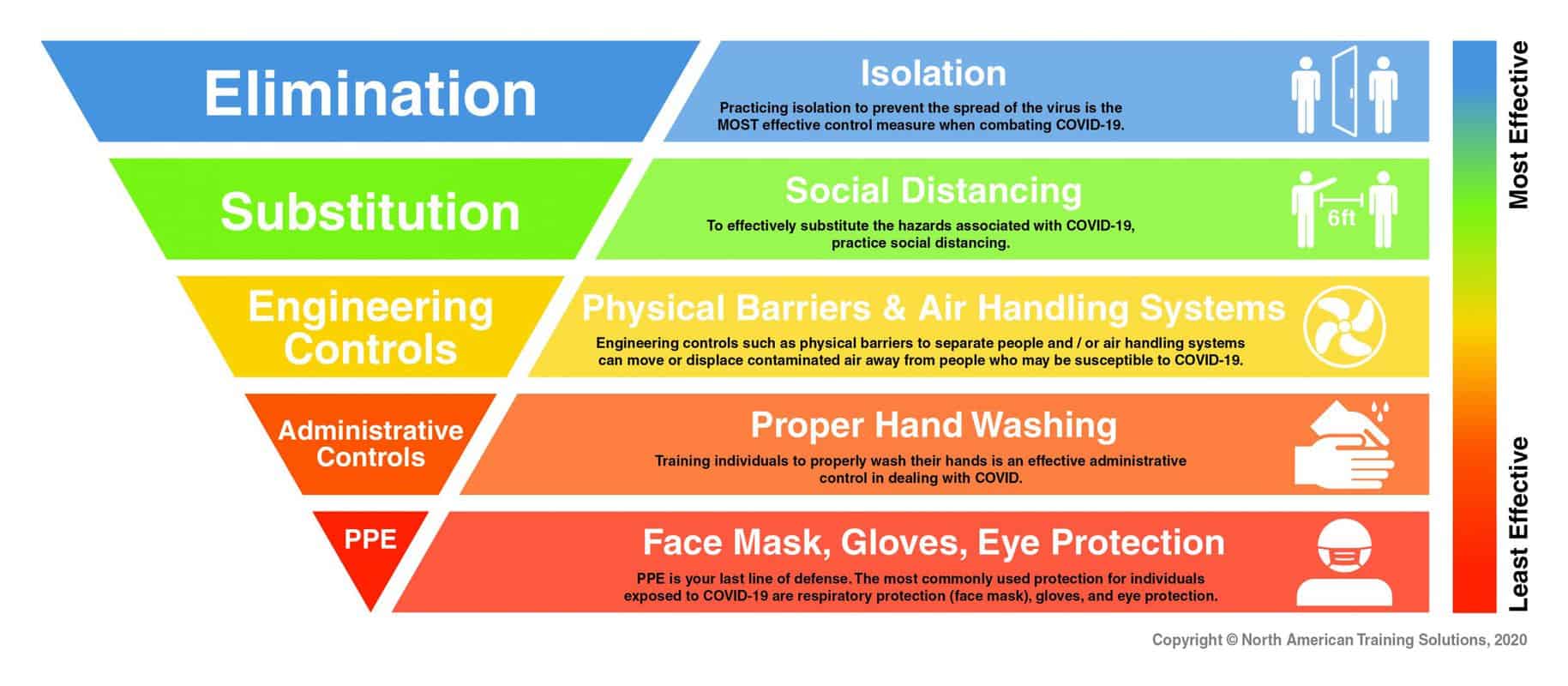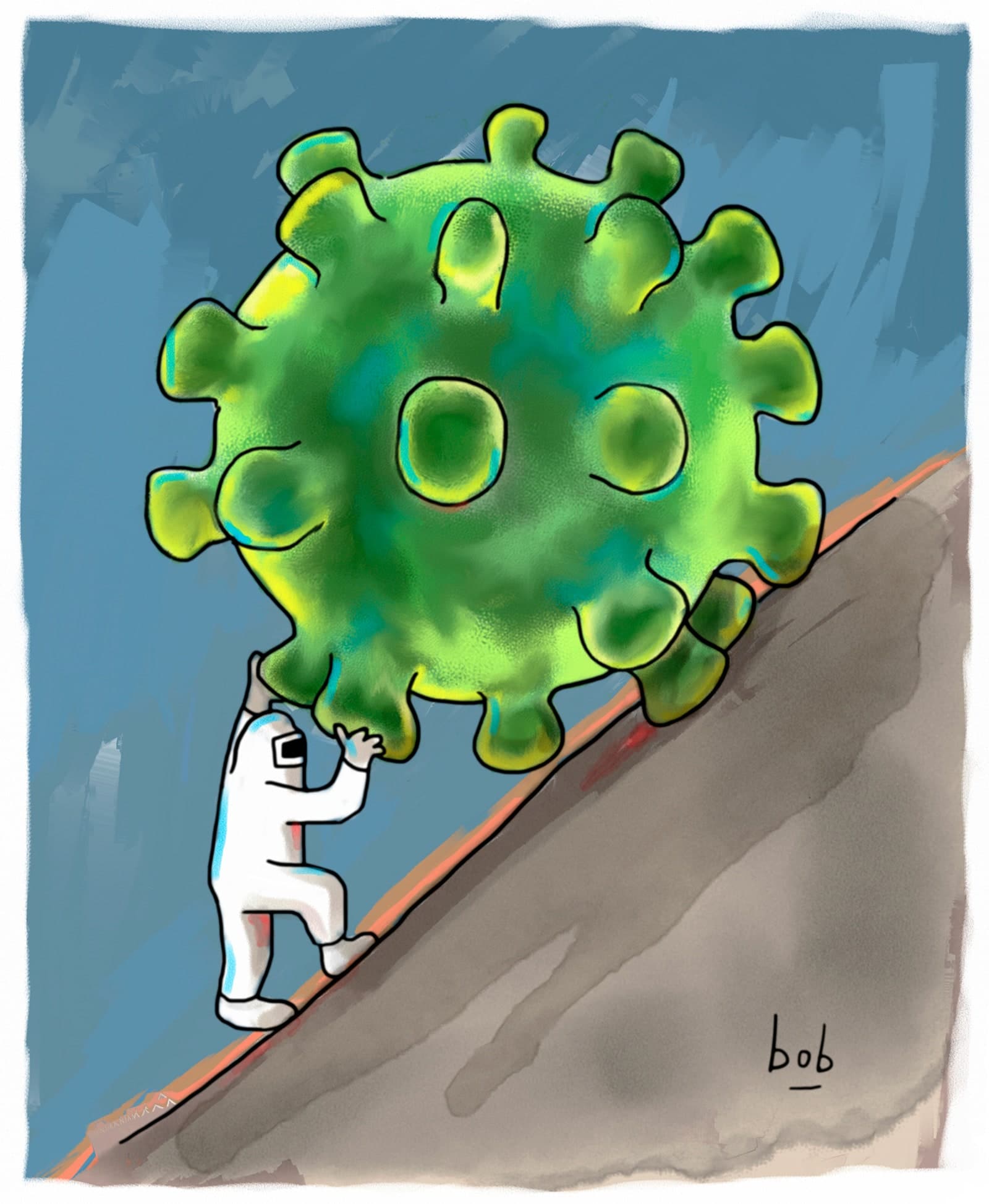The COVID-19 coronavirus clearly changed our lives during lockdown. The question now is: what will life be like when we return to “normal”?
After being quarantined and keeping 6 feet apart for months, the thought of returning to normal life can create anxiety. If you are getting close to your next dental appointment, you may wonder, is it safe? What is it like going to the dentist after coronavirus lockdown?
Yes, it will be safe, but you will notice some changes to office protocols at least for the foreseeable future. Here’s what you need to know about how medical and dental practices will keep you safe.
How the World will Move on from the COVID-19 Coronavirus
In all healthcare settings, including dentistry, there are five main requests of patients to reduce spread of infectious diseases. The following illustration shows the ways healthcare providers are maintaining the safety of their patients.
You will notice that the methods at the top of the pyramid are the most effective, yet most drastic methods. There are only certain conditions like tuberculosis and the coronavirus that warrant isolation and social distancing from infected patients.
As of May 2020, we are now reaching a time when it is safe for patients to begin removing the most drastic coronavirus precaution, isolation. You will notice that the precautions further down the list will remain in place until we reach another checkpoint of safety.

Going to the Dentist: What Are Dentists, Specifically, Doing To Prevent the Spread of Coronavirus?
Going to the dentist can create anxiety in normal situations. Now as the world slowly overcomes the coronavirus fears, you have an added level of concern. You do not need to worry. When your state does reopen, you can rest assured that the proper precautions have been established to safely go to the dentist.
The key is prevailing through understanding. There will be changes to the process of going to the dentist. Here’s what you can expect dentists are doing to keep you safe:
The Facility
The usual magazines, toys, etc in waiting rooms will be removed. In their place you will find tissues, hand sanitizer, and extra trashcans.
Chairs will be placed 6 feet apart in the waiting room. Depending on the facility design, you may be asked to wait in your car, or you may be taken immediately back to a private room upon arrival.
Staff will be frequently disinfecting high touch surfaces in the lobby such as doorknobs, pens, keyboards, light switches, etc.
If office ventilation is poor, a HEPA filtration unit may be installed to reduce aerosols.
The Patient Experience
There will be a pre-appointment screening process. You will be asked to complete a questionnaire with questions like: have you had flu like symptoms in the past 14 days, have you traveled, do you have a fever, have you cared for someone ill?
Upon arrival, you will have your temperature taken with a forehead thermometer to confirm all patients are fever-free upon entering. A temperature below 100.4°F is required for elective treatment.
Patients may be asked to swish with 1% hydrogen peroxide prior to treatment to reduce any pathogens in the saliva.
Appointment times will be increased to reduce the collection of patients in waiting rooms
Patients are asked to report any signs or symptoms of COVID-19 within the next 14 days of their visit.
The Staff
It’s not just patients who must pass screening questions. All staff will also be screened and have their temperature checked daily to confirm that they are healthy to work.
In the past, it was considered a breach for front desk staff to wear gloves or masks in the lobby. Now you will notice that front desk staff are wearing clean masks and gloves.
Dentists, hygienists, and assistants will be wearing more robust personal protective equipment for higher risk procedures that create more aerosols.
Staff will be changing from scrubs to street clothes/shoes or vice-versa before entering or exiting the practice.
That’s Not All
Infection control is not new for a dental practice. All dental practices already follow OSHA standards for cleaning and sanitizing everything with EPA-approved disinfectants specially designed for use in a healthcare setting to kill viruses, bacteria, and other blood-borne pathogens. It has long been standard protocol for the entire dental care team to wear protective gear, including gloves, surgical masks, and goggles for eye protection to minimize the risk of transmitting germs from one patient to another.
These standards are in practice every day, regardless of whether there’s a known outbreak of an infectious disease.
Think about it: before COVID-19, did you ever worry about getting hepatitis, the flu, or HIV when going to the dentist? Probably not. And that’s because, like other medical settings, dental practices are trained extensively in infection control protocols to maintain a safe and disinfected environment.
Trust me, I know it’s a lot to take in. 2020 has been an unprecedented year. It’s easy to be overwhelmed with so much change. We will pull through. And so I’d like to leave you with a quote.
“Incredible change happens in your life when you decide to take control of what you do have power over instead of craving control over what you don’t.”
― Life, the Truth, and Being Free


